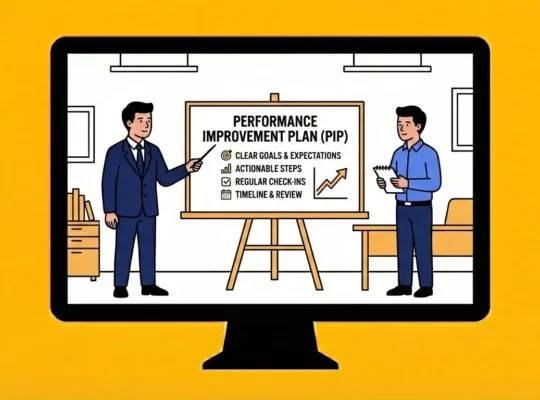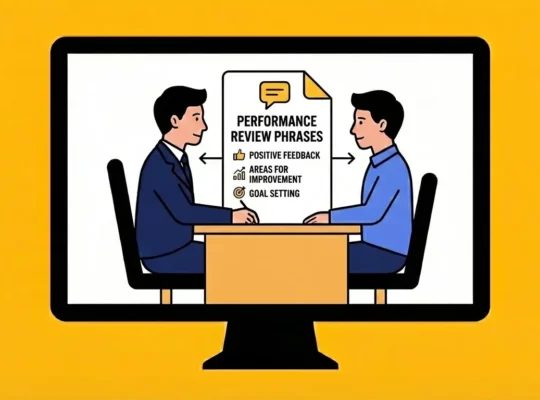Are you prepared for the talent management challenges that lie ahead? As we approach 2025, the landscape of work is changing rapidly. Are you equipped to navigate the challenges and seize the opportunities?
Table of Contents
1. Talent Acquisition in a Competitive Market
2. Skill Gaps and Alignment with Business Needs
3. High Turnover Rates
4. Stagnation and Poor Succession Planning
5. Adapting to Technological Changes
6. Cultural Misalignment
7. Lack of diversity and inclusion
8. Managing Employee Performance and Engagement in Remote Environments
1. Talent Acquisition in a Competitive Market
The global talent shortage is one of the most pressing challenges of talent management today. According to a recent study, over 69% of companies are facing difficulties in recruiting top talent. The rapid shift toward remote work and flexible work arrangements means businesses must now compete for a global pool of candidates, adding a new layer of competition to the mix.
The Impact of the Global Talent Shortage
The global talent shortage has far-reaching implications for organizations. When companies struggle to find qualified candidates, it can lead to:
- Delayed projects and initiatives
- Decreased productivity
- Increased costs associated with hiring and onboarding
- Difficulty meeting business objectives
To address this challenge, organizations must adopt innovative recruitment strategies and create a compelling employer brand to attract top talent.
Strategies for Overcoming the Global Talent Shortage
To attract and retain top talent in today’s competitive market, organizations must implement effective strategies, such as:
- Strengthening employer branding: 84% of job seekers prioritize company reputation! Create a strong and attractive employer brand that highlights your company’s culture, values, and opportunities for growth.
- Leveraging technology: Utilize AI-powered recruitment tools and social media platforms to reach a wider pool of candidates.
- Prioritizing diversity, equity, and inclusion: Create an inclusive workplace culture that attracts a diverse range of talent.
- Offering competitive compensation and benefits: Ensure your compensation packages are competitive and offer attractive benefits to attract top talent.
- Focusing on employee development and retention: Invest in employee training and development programs to retain your top talent and foster a positive work culture.
2. Skill Gaps and Alignment with Business Needs
Skill gaps have become a pressing concern for organizations as businesses evolve and the demands on the workforce change. Identifying and addressing these gaps is crucial for achieving organizational goals and ensuring long-term success.
Impact on Organizations
- Reduced Productivity: Skill gaps can lead to decreased productivity and efficiency.
- Inability to Meet Business Goals: If employees lack the necessary skills, organizations may struggle to achieve their objectives.
- Ineffective Talent Deployment and Retention: Misalignment between skills and business needs can result in poor talent deployment and increased turnover.
Strategies for Bridging the Skill Gap
To effectively address skill gaps and align talent development with business needs, organizations can implement the following strategies:
- Conduct regular skill assessments: Assess employees’ current skills and identify areas for development.
- Align training with business objectives: Ensure that training programs are designed to address specific skill gaps and support the organization’s goals.
- Leverage technology: Utilize online learning platforms and other tools to deliver effective training and development programs.
- Foster a culture of continuous learning: Encourage employees to take ownership of their professional development and seek out opportunities to learn and grow.
- Implement succession planning: Identify and develop high-potential employees to fill critical roles and ensure business continuity.
3. High Turnover Rates
Employee retention refers to the ability of an organization to retain its employees over time. High turnover rates can have a significant negative impact on a company’s bottom line, as it leads to increased recruitment and training costs, loss of productivity, and damage to company culture.
Impact on Organizations
High employee turnover can have a detrimental impact on organizations in several ways:
- Increased Costs: Recruiting and training new employees is expensive. High turnover rates can lead to significant increases in hiring and onboarding costs.
- Loss of Productivity: When employees leave, it can disrupt workflow and lead to a temporary decline in productivity.
- Damage to Company Culture: High turnover can erode company culture and make it difficult to attract and retain top talent in the future.
- Loss of Institutional Knowledge: When experienced employees leave, the organization may lose valuable knowledge and expertise.
Strategies for Improving Employee Retention
To address the challenges of employee retention, organizations can implement the following strategies:
- Create a Positive Work Environment: Foster a supportive and inclusive culture that values employee contributions.
- Offer Competitive Compensation and Benefits: Ensure that employees are fairly compensated and provided with attractive benefits.
- Provide Opportunities for Growth and Development: Invest in employee training and development to help them advance their careers.
- Encourage Work-Life Balance: Promote healthy work-life balance initiatives to reduce stress and burnout.
- Recognize and Reward Performance: Acknowledge and reward employee achievements to boost morale and motivation.
- Gather Employee Feedback: Regularly seek feedback from employees to identify areas for improvement and address their concerns.
4. Stagnation and Poor Succession Planning
Stagnation refers to a state of inactivity or lack of progress. When employees feel stagnant in their roles, they may become disengaged and seek opportunities elsewhere.
Succession planning is the process of identifying and developing high-potential employees to fill critical roles within the organization. A lack of effective succession planning can lead to disruptions in leadership and operations when key employees leave the organization.
Impact on Organizations
Stagnation and poor succession planning can have a detrimental impact on organizations in several ways:
- Reduced Innovation: A stagnant workforce may struggle to adapt to changing business needs and drive innovation.
- Loss of Institutional Knowledge: Failure to plan for succession can lead to a loss of valuable knowledge and expertise when key employees leave the organization.
- Disruption in Leadership: A lack of effective succession planning can create leadership vacuums and disrupt organizational operations.
- Decreased Employee Morale: Stagnation and a lack of career growth opportunities can lead to decreased employee morale and job satisfaction.
Strategies for Addressing Stagnation and Succession Planning
To address the challenges of stagnation and poor succession planning, organizations can implement the following strategies:
- Create Clear Career Paths: Develop clear career paths and progression frameworks to provide employees with a sense of direction and motivation.
- Invest in Employee Development: Offer training and development programs to help employees acquire new skills and advance their careers.
- Implement Succession Planning: Identify and develop high-potential employees to fill critical roles and ensure business continuity.
- Foster a Culture of Innovation: Encourage creativity and risk-taking to foster a culture of innovation and continuous improvement.
- Provide Feedback and Recognition: Regularly provide feedback and recognize employee achievements to motivate and engage your workforce.
5. Adapting to Technological Changes
Failure to keep pace with technological advancements can lead to obsolescence, decreased efficiency, and a loss of competitiveness. It is imperative for organizations to recognize the importance of staying up-to-date with the latest trends and technologies, and to invest in the necessary resources to ensure their continued success.
Impact on Organizations
- Reduced Efficiency: Failure to adapt to technological changes can lead to inefficiencies and increased costs.
- Loss of Competitiveness: Organizations that do not embrace technology may struggle to compete in the marketplace.
- Decreased Customer Satisfaction: Outdated technology can lead to a poor customer experience.
Strategies for Adapting to Technological Changes
- Invest in Training and Development: Provide employees with the necessary skills to utilize new technologies effectively.
- Foster a Culture of Innovation: Encourage experimentation and risk-taking to foster a culture of innovation and adaptability.
- Embrace Digital Transformation: Leverage technology to streamline processes, improve efficiency, and enhance customer experience.
- Address Resistance to Change: Implement change management strategies to mitigate resistance and facilitate the adoption of new technologies.
- Partner with Technology Experts: Collaborate with technology consultants or partners to gain access to expertise and resources.
6. Cultural Misalignment
Cultural misalignment can occur when there is a mismatch between the values, beliefs, or behaviors of individuals or groups within an organization. This can lead to communication breakdowns, conflicts, and decreased productivity.
Common Causes
- Mergers and acquisitions: When two companies with different cultures merge, it can be difficult to integrate the two cultures and create a unified identity.
- Global expansion: Expanding into new markets with different cultural norms and expectations can lead to cultural misunderstandings.
- Generational differences: Different generations may have different values and work styles, which can lead to cultural clashes.
- Lack of diversity and inclusion: A lack of diversity and inclusion can create a monocultural environment that excludes certain groups of people.
Impact on Organizations
Cultural misalignment can have a significant negative impact on organizations, including:
- Decreased productivity: Communication breakdowns and conflicts can lead to decreased productivity and efficiency.
- Reduced employee morale and engagement: Employees who feel excluded or misunderstood may be less engaged and motivated.
- Increased turnover: High levels of cultural misalignment can lead to increased employee turnover.
- Damage to reputation: Cultural misalignment can damage an organization’s reputation and make it difficult to attract and retain top talent.
Strategies for Addressing Cultural Misalignment
To address cultural misalignment, organizations can implement the following strategies:
- Foster a culture of inclusivity and respect: Create a safe and welcoming environment for all employees, regardless of their background or identity.
- Promote open communication: Encourage open and honest communication among employees to prevent misunderstandings and build trust.
- Provide training on cultural awareness and sensitivity: Educate employees about different cultures and how to communicate effectively across cultural boundaries.
- Celebrate diversity: Recognize and celebrate the diversity of your workforce, and encourage employees to share their cultural backgrounds and experiences.
- Seek feedback from employees: Regularly seek feedback from employees through employee feedback tools to identify and address any cultural misalignment issues.
7. Lack of diversity and inclusion
Lack of diversity and inclusion (D&I) in talent development can have significant negative consequences for organizations. When D&I initiatives are not prioritized, it can lead to a stagnant workforce, missed opportunities, and a negative impact on company culture.
Impact on Organizations
- Reduced Innovation: A lack of diversity can stifle innovation and creativity, as different perspectives and experiences are essential for driving new ideas.
- Loss of Talent: If employees from marginalized groups feel excluded or undervalued, they may seek opportunities elsewhere.
- Damaged Reputation: A company with a reputation for discrimination or lack of diversity can struggle to attract top talent and may face negative publicity.
- Decreased Employee Engagement: A lack of diversity and inclusion can lead to decreased employee engagement and morale.
Strategies for Promoting Diversity and Inclusion in Talent Development
- Set Clear D&I Goals: Establish clear goals and targets for increasing diversity and inclusion within your organization.
- Review Talent Acquisition Processes: Ensure that your recruitment and selection processes are fair and inclusive.
- Provide Diversity and Inclusion Training: Educate employees about unconscious bias and the importance of diversity and inclusion.
- Create Employee Resource Groups: Support employee resource groups for marginalized groups to provide a sense of community and belonging.
- Measure Progress: Track progress towards your D&I goals and make adjustments as needed.
8. Managing Employee Performance and Engagement in Remote Environments
Managing employee performance and engagement in remote environments presents unique challenges for organizations. However, with the right strategies, it is possible to maintain high levels of productivity and satisfaction among remote teams.
Impact on Organizations
- Decreased Productivity: If employees are not engaged or motivated, it can lead to decreased productivity and lower quality of work.
- Increased Turnover: High levels of employee disengagement and dissatisfaction can contribute to increased turnover rates.
- Damage to Company Culture: Remote work can make it difficult to maintain a strong company culture and sense of community.
Strategies for Managing Employee Performance and Engagement in Remote Environments
- Set Clear Expectations: Clearly define roles, responsibilities, and performance metrics for remote employees.
- Foster a Culture of Trust: Build trust and empower remote employees to make decisions and take initiative.
- Utilize Technology: Leverage collaboration tools and communication platforms to facilitate effective teamwork and communication.
- Provide Regular Feedback: Offer balanced feedback and recognition to help employees stay motivated and engaged.
- Encourage Work-Life Balance: Promote healthy work-life balance practices to prevent burnout and maintain employee well-being.
- Foster a Sense of Community: Organize virtual team-building activities and create opportunities for social interaction among remote employees.
The challenges of talent management will continue to evolve, but one thing remains clear: organizations that invest in their people, from talent acquisition to leadership development, will thrive. By prioritizing employee engagement, personalized development programs, and innovative recruitment strategies, companies can build a workforce that is agile, engaged, and ready for the future.





